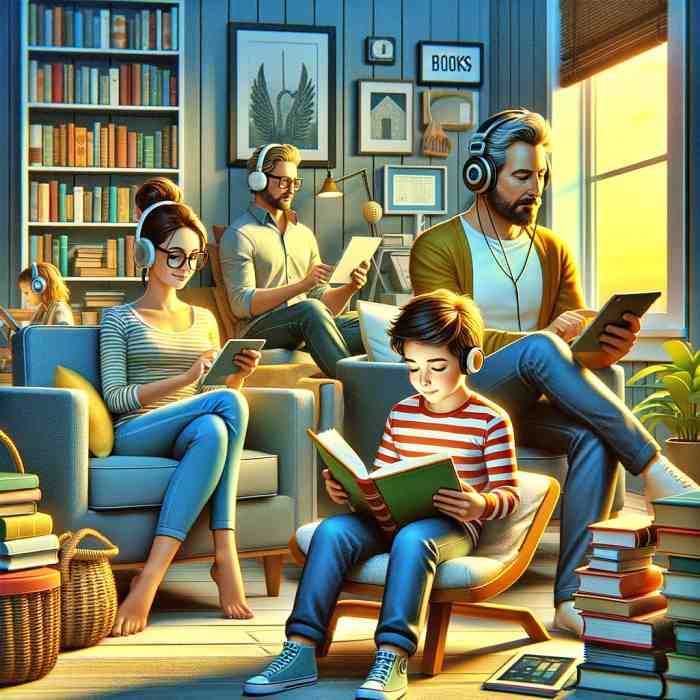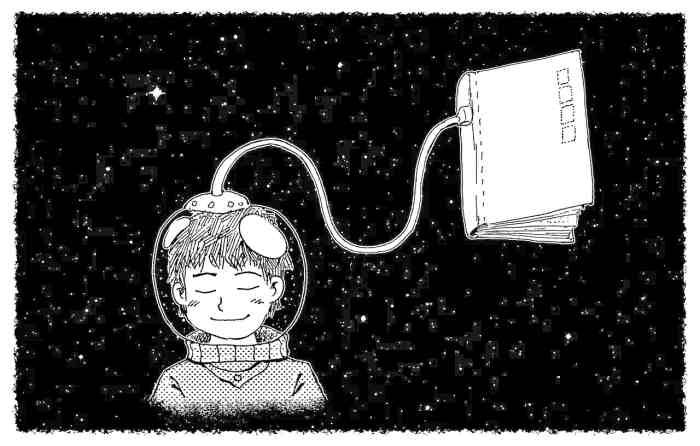Dr Arun Prakash
Nurturing Young Readers at Home
A Personal Journey with Books
In the quaint village of Sarai Hari Ram, nestled in the Prayagraj District and cradled by the serene Varuna River, my journey with words began. This village, a sleepy haven mostly inhabited by agriculturists, was where the early chapters of my life unfolded. In the early 1960s, owning a bicycle, wristwatch, or radio was a luxury most could only dream of, and the local government school, with its limited space, often conducted classes under the open sky.
My father, employed in a government job, visited us every few months. During those days, newspapers and periodicals were luxuries. Information was mostly passed down through oral storytelling, and my grandmother, a well-read woman despite her limited formal education, became my first portal into the world of stories. Every night, I would immerse myself in the tales she told – from ghost stories to epics like Ram Charit Manas and Mahabharata. Her stories were my gateway to a newfound ability to read, and soon books became my treasured companions.
In a place where resources were scarce, getting hold of books was a challenge, yet my determination to read knew no bounds. I would travel great distances on foot just to borrow books. My reading material was diverse – from spiritual texts to classics like Panchatantra and Arabian Nights, and even Urdu poetry. Reading became more than just a habit; it was my lifeline to the world.
When my father visited, he would bring with him stories from afar, feeding my voracious appetite for knowledge. Observing him read, I learned to read swiftly, trying to finish a page before he turned it. This skill proved invaluable, especially since my schools had no libraries. My thirst for books was unquenchable, but it was not until I joined Gomti Inter College in Phulpur that I found my paradise – a school with an extensive library.
This period marked a significant turn in my life. My sister, who had ceased her education due to the lack of girls’ schools, joined a nearby college, becoming the first girl in the area to ride a bicycle. Our journeys to school, with her on her bicycle and me by her side, were adventures in themselves. These treks provided me ample time to indulge in my passion for reading. The school library became my sanctuary, where the librarian, impressed with my zeal, allowed me to borrow as many books as I wished.
My literary journey expanded in Allahabad during my college years. The city, a hub of learning and literature, introduced me to prestigious libraries like the Alfred Library and the Central State Library. It was here that I delved into world literature, exploring works by Kahlil Gibran, Ayn Rand, and Sir Arthur Conan Doyle, among others. I also discovered a unique source of books – the local scrap dealers in the Chowk area, where books were sold by weight, not value. This collection became the cornerstone of my personal library.
As my love for reading flourished, so did my understanding of its importance. Reading for knowledge, not just for exams, became my philosophy. Books have been my steadfast companions, guiding me through the evolving digital age. From kerosene lamps to Kindles, my journey with books has been a testament to the transformative power of reading.
Today, as the digital age reshapes our access to information, I reflect on the changing landscape of reading. While technology offers convenience, the essence and value of books remain unmatched. As I continue to explore every topic under the sun through my reading, I am reminded of the endless possibilities that books offer not just as sources of knowledge but as gateways to worlds unknown.
The Timeless Value of Books
In an era where the digital world dominates, the value of books remains an unshakable pillar in the realm of knowledge and imagination. Despite the influx of screens and electronic media, the significance of books in our lives cannot be overstated. This section explores the enduring importance of reading in a technology-driven world, highlighting the unique benefits that books offer in comparison to their digital counterparts.
In our rapidly evolving digital age, the role and significance of reading have taken on new dimensions. The comparison between digital and physical reading experiences reveals unique aspects of each method:
- Digital vs. Physical Reading: The digital age has brought screens to the forefront of our daily lives. However, physical books hold a special allure with their tangible qualities. The tactile sensation of turning pages, the physical engagement required, contrasts sharply with the quick, often superficial interaction we have with digital content.
- Attention and Comprehension: Research indicates that reading physical books may lead to enhanced comprehension and retention. The act of reading a book demands a level of concentration and engagement that is often absent in digital reading, promoting deeper cognitive processing of the content.
- Sensory Experience: Physical books offer a sensory richness — the feel, smell, and heft of a book — that digital screens can’t replicate. This sensory connection can deepen the emotional resonance and memorability of the reading experience.
- Reduced Distractions: Physical books provide an escape from the barrage of notifications and distractions typical of digital devices, fostering a more immersive reading experience.
- Broadening Horizons: Books, as gateways to new worlds, ideas, and cultures, expand our perspectives beyond our immediate surroundings. They serve as tools for empathy, exposing us to diverse life experiences and viewpoints.
- Critical Thinking and Imagination: Reading nurtures imagination and critical thinking, prompting readers to question, analyze, and develop independent opinions. This fosters a culture of thoughtful engagement and reflection.
- Emotional and Psychological Benefits: Books can be a source of emotional release and a means to understand human nature and relationships more deeply. They provide not just education, but emotional support and mental relaxation.
In the midst of the digital era’s fast pace and screen-centric culture, books stand as havens of imagination and concentration. They transcend being mere sources of information, embodying a deeper understanding of the world and ourselves. As we navigate the complexities of this digital epoch, the enduring value of books becomes more crucial, reminding us of the richness of the written word and the transformative power of stories in educating and inspiring us.
Raising a Child Who Loves to Read

Cultivating a love for reading in children is an invaluable gift that can significantly enrich their lives. This section delves into strategies and practices to encourage children to embrace reading, highlighting the role of the home environment and parental influence in developing a lifelong love for books.
Creating a Reading-Friendly Environment at Home
- Dedicated Reading Spaces: Establish cozy, inviting reading nooks in the home. A comfortable space with good lighting and easy access to books can make reading an enjoyable experience.
- Availability of Diverse Reading Materials: Ensure a variety of books are available at home. Include different genres, cultural stories, and age-appropriate materials to cater to evolving interests and reading levels.
The Role of Parents and Caregivers in Modelling Reading Behaviour
- Leading by Example: Children often emulate adult behaviours. Regularly seeing parents and caregivers engaged in reading can naturally incline children to pick up a book.
- Shared Reading Time: Set aside time for reading together. This can be a special bedtime routine or a dedicated family reading hour. It’s an opportunity to bond and discuss the stories read, enhancing comprehension and critical thinking.
Strategies for Encouraging Reading from an Early Age
- Interactive Reading Sessions: Make reading an interactive activity. Use expressive voices for different characters and encourage children to ask questions and express their thoughts about the story.
- Incorporating Books into Daily Activities: Introduce books that correlate with daily activities or interests. For example, reading a book about gardening while engaging in the activity.
- Regular Library Visits: Make visits to the local library a regular part of your routine. Many libraries offer storytelling sessions and reading clubs for young readers.
- Rewards and Positive Reinforcement: Use positive reinforcement to encourage reading habits. This could be as simple as praise and acknowledgment or a small reward system for regular reading.
Creating a nurturing reading environment at home is crucial in developing a child’s love for books. It’s about making reading an integral and enjoyable part of their daily lives. By investing time in reading activities and demonstrating a personal love for reading, parents and caregivers can profoundly influence a child’s attitude towards books. This foundation not only improves their academic skills but also opens a world of imagination and knowledge, setting them on a path of lifelong learning and curiosity.
Bridging Digital and Literary Worlds

In the contemporary landscape where digital media is pervasive, it’s essential to find a balance that allows children to appreciate the value of books while also embracing the benefits of technology. This section explores how to integrate digital reading tools like e-books and audiobooks into a child’s reading journey, ensuring they gain the best from both worlds.
Navigating the Balance Between Screen Time and Book Time
- Setting Boundaries: Establish clear guidelines on screen time, ensuring it doesn’t overshadow time spent with physical books.
- Combining Digital and Physical Reading: Encourage a routine that includes both e-books and physical books, highlighting the unique benefits of each format.
Introducing E-books and Digital Readers like Kindle
- Ease of Access: Digital readers and e-books can provide instant access to a vast range of reading materials, especially beneficial for hard-to-find titles or remote learning scenarios.
- Interactive Features: Many digital reading platforms offer interactive features like in-built dictionaries, annotations, and adjustable text sizes, which can enhance the reading experience and support learning.
The Role of Audiobooks in Cultivating Reading Habits
- Accessibility for Different Learning Styles: Audiobooks can be particularly beneficial for auditory learners or children with reading difficulties, as they can listen to stories and learn new words.
- Expanding Literature Exposure: Audiobooks can be a convenient way to experience literature in situations where reading a physical book isn’t feasible, like during long car trips or while multitasking.
Balancing Engagement with Technology and Traditional Reading
- Promoting Variety in Reading Formats: Encourage children to explore different formats – print, digital, and audio – to discover their preferences while reaping the benefits of each.
- Critical Evaluation of Digital Content: Teach children to critically assess digital content, distinguishing between quality reading materials and less educational content.
In the digital age, it’s not about choosing books over screens, but rather about leveraging the strengths of both to foster a comprehensive and enriching reading experience. By embracing digital tools judiciously, parents and educators can enhance traditional reading practices, offering children a well-rounded approach to literature and learning. This balanced integration helps in nurturing well-adapted readers who can navigate and appreciate the diverse formats of the literary world.
Books as Gateways to Imagination and Knowledge
Books are more than just a source of information; they are gateways to vast worlds of imagination, creativity, and knowledge. This section highlights the importance of encouraging children to explore diverse reading materials and how these experiences contribute to their overall development.
Encouraging Diverse and Inclusive Reading Materials
- Variety of Genres: Introduce children to a wide range of genres, including fiction, non-fiction, fantasy, science fiction, biographies, and cultural stories. This diversity enriches their understanding and appreciation of different perspectives.
- Inclusive Literature: Select books that represent various cultures, languages, and experiences, providing children with a more comprehensive view of the world and promoting empathy and understanding.
The Impact of Storytelling and Imaginative Play on Reading Interest
- Storytelling as a Tool: Engage in storytelling that sparks imagination and curiosity. This can be through traditional bedtime stories, impromptu tales, or interactive story apps.
- Encouraging Creative Expression: Activities like drawing scenes from a book, acting out stories, or writing their own continuations of a story can deepen children’s engagement with reading. Through sharing these narratives, children are able to witness concrete examples of how reading unlocks a world filled with endless opportunities and a variety of viewpoints.
Real-life examples can powerfully illustrate the impact of reading on personal and professional success, as well as on broadening worldviews. Here are a few examples:
Success Stories Influenced by a Love for Reading
- JK Rowling: Known for the “Harry Potter” series, Rowling’s journey from a struggling single mother living on welfare to one of the most successful authors in the world is inspiring. Her love for reading and storytelling from a young age played a crucial role in her success.
- Elon Musk: The CEO of SpaceX and Tesla, Musk is known for his revolutionary ideas in technology and space. He attributes much of his knowledge to a voracious reading habit, having read the entire Encyclopaedia Britannica by age nine and continuing to read widely in various subjects.
- Oprah Winfrey: An avid reader, Oprah’s passion for books was evident from her early years when she would read aloud to her grandmother. She went on to create ‘Oprah’s Book Club,’ which has made reading a communal experience and inspired millions to read more.
Examples of How Reading Broadens Worldviews
- Malala Yousafzai: The youngest Nobel Prize laureate, Malala’s exposure to books and education played a significant role in her activism for girls’ education in Pakistan. Her story highlights how reading can inspire individuals to fight for change and equality.
- Yuval Noah Harari: An author and historian, Harari’s books like “Sapiens” and “Homo Deus” reflect his extensive reading and research across disciplines. His works offer readers a unique perspective on humanity’s past, present, and future, encouraging a global and long-term perspective.
- Michelle Obama: In her memoir, “Becoming,” the former First Lady of the United States describes how reading helped her during her childhood in Chicago, providing solace and inspiration. Her story emphasizes how reading can support personal growth and resilience.
These examples illustrate how a love for reading can profoundly influence individuals’ lives, shaping their careers, inspiring their ambitions, and expanding their understanding of the world. By sharing these stories, children can see tangible evidence of how reading can open doors to limitless possibilities and diverse perspectives.
Integrating Reading into Education

The integration of reading into a child’s educational journey is crucial for their academic and personal development. This section explores the role of reading in education, emphasizing strategies to encourage reading beyond the school curriculum and the responsibility of educators in fostering a love for reading.
The Importance of Reading in Academic Success
- Enhancing Literacy Skills: Regular reading improves literacy skills, which are fundamental for academic achievement in all subjects.
- Building Knowledge and Comprehension: Reading across various subjects and genres broadens children’s knowledge base and enhances their comprehension skills, vital for academic success.
Encouraging Reading Beyond the Curriculum
- Supplementary Reading Materials: Introduce children to books and materials that complement and extend their school curriculum, fostering a deeper understanding of subjects.
- Reading for Pleasure: Encourage children to read for enjoyment, not just for school assignments, to develop a genuine love for reading.
Role of Educators in Fostering a Love for Reading
- Creating a Reading Culture in Schools: Teachers can foster a reading-friendly atmosphere by setting up classroom libraries, having dedicated reading time, and celebrating book-related events.
- Incorporating Diverse Reading Materials: Use a variety of texts in the classroom, including multicultural and multigenre literature, to cater to different interests and backgrounds.
Reading as a Tool for Lifelong Learning
- Teaching Critical Thinking Through Reading: Use reading as a tool to teach analytical and critical thinking skills, encouraging students to question and discuss what they read.
- Connecting Reading with Real-World Issues: Link reading materials to current events and real-world issues, making reading more relevant and engaging for students.
Integrating reading into the educational journey of a child is not just about achieving academic milestones; it’s about fostering a lifelong habit that enriches their cognitive, emotional, and social development. Educators play a pivotal role in this process, and by embracing innovative and inclusive reading practices, they can significantly enhance students’ learning experiences and their love for reading. This section aims to provide actionable strategies for educators and parents to work collaboratively in making reading an integral and enjoyable part of a child’s education.
Educational Initiatives and Programs Promoting Reading
Recognizing the importance of reading, various educational boards and organizations have implemented initiatives to encourage reading habits in children. This section will highlight some of these significant programs and their impact on promoting a culture of reading.
CBSE Reading Challenge
- Overview and Goals: The CBSE Reading Challenge is an initiative by the Central Board of Secondary Education in India aimed at enhancing reading skills among students. It focuses on critical thinking and comprehension abilities.
- Implementation and Impact: Schools participating in this challenge incorporate various activities and competitions that encourage students to engage in more in-depth reading and analysis, fostering a love for reading and improving their understanding and interpretation skills.
Laurels International School’s DEAR (Drop Everything And Read) Initiative
- Program Description: DEAR is an innovative program where, for a set period, all students and staff stop their usual activities and dedicate time exclusively to reading.
- Benefits and Success Stories: This program has been successful in instilling a habit of regular reading among students, improving their concentration and exposing them to a variety of literature.
British Council and Other Organizations’ Efforts
- British Council’s Reading Programs: The British Council offers various programs and resources to support reading among children and young adults. These include storytelling sessions, workshops, and access to a wide range of books.
- Global Reach and Influence: Such initiatives have a global impact, reaching children in different countries and providing them with the resources and motivation to develop reading habits.
Community and Online Reading Initiatives
- Local Community Programs: Many local communities and libraries run reading clubs, story hours, and summer reading programs to encourage children to read more.
- Online Reading Platforms: Online platforms and apps offer interactive and engaging ways for children to access books and reading materials, making reading more accessible and fun.
These initiatives by educational boards, schools, and organizations play a crucial role in cultivating reading habits among children. By providing diverse and engaging opportunities for reading, these programs not only enhance students’ literacy skills but also foster a lifelong love for reading. This section aims to highlight the collective efforts in promoting reading culture and how they contribute to the overall development of children’s reading skills and interests.
The Future of Reading in a Digital Era

As we advance into a future increasingly shaped by digital technology, the landscape of reading is undergoing significant transformations. This section explores predictions and trends in reading habits, the impact of emerging technologies on reading, and the importance of preserving the essence of reading in a rapidly evolving digital world.
Predictions and Trends in Reading Habits and Publishing
- Digital and Audiobook Growth: The popularity of e-books and audiobooks is expected to continue rising, offering convenience and accessibility to a broader audience.
- Personalized Reading Experiences: Advances in technology may lead to more personalized reading experiences, with AI-curated content and interactive books tailored to individual preferences and reading levels.
How Emerging Technologies are Shaping the Future of Reading
- Augmented Reality (AR) and Virtual Reality (VR) in Reading: AR and VR could revolutionize how we experience stories, offering immersive and interactive reading experiences that blend the boundaries between books and multimedia.
- Voice-Activated Technology and Reading: The integration of voice-assisted technology in reading, such as smart speakers and voice-activated e-readers, might make reading more accessible and interactive.
Preserving the Essence of Reading in a Changing World
- Balancing Technology with Traditional Reading Values: While embracing technological advancements, it’s crucial to maintain the core values of reading, such as imagination, critical thinking, and empathy.
- Role of Libraries and Educators: Libraries and educators will need to adapt to these changes, finding innovative ways to promote and facilitate reading in various formats while preserving the love for traditional books.
The Unchanging Power of Storytelling
- Storytelling as a Timeless Element: Regardless of format, the power of storytelling remains constant. The ability of stories to convey ideas, emotions, and experiences is universal and timeless.
- Encouraging Diverse Storytelling Voices: The digital era offers opportunities for a wider range of voices to be heard in publishing, promoting diversity and inclusivity in literature.
The future of reading in the digital era is poised to blend traditional reading with innovative technologies, offering enriched experiences while facing challenges in maintaining the fundamental essence of reading. This section reflects on these changes and emphasizes the ongoing importance of reading in personal and societal growth, exploring how we can adapt to and embrace these advancements while upholding the timeless value of literature.
Embracing Reading as a Lifelong Companion
As we journey through the chapters of “Cultivating the Love for Reading,” we arrive at a profound understanding of the integral role reading plays in our lives. This conclusion aims to encapsulate the essence of what we’ve explored, highlighting the timeless significance of reading and inspiring readers to foster and nurture a love for reading in the next generation.
The Enduring Significance of Reading
- Beyond Literacy: Reading is more than just a skill for literacy; it’s a gateway to vast knowledge, a catalyst for imagination, and a foundation for critical thinking.
- Adaptability in the Digital Age: Even as we navigate through an increasingly digital world, the fundamental qualities of reading remain invaluable, adapting to new forms while retaining its core essence.
Inspiring Future Generations
- The Role of Parents and Educators: Parents and educators are pivotal in instilling a love for reading in children, shaping not only their academic success but also their character and worldview.
- Creating a Legacy of Reading: By fostering a reading culture at home and in educational settings, we can pass on the legacy of reading, ensuring that it continues to enrich lives.
Reflecting on Personal and Societal Benefits
- Personal Growth and Empathy: Reading not only contributes to personal growth and development but also fosters empathy and understanding of diverse perspectives.
- Societal Impact: A society that values reading is one that encourages informed and thoughtful citizens, capable of critical thinking and contributing positively to their communities.
A Lifelong Journey with Books
- Continuous Learning and Exploration: Reading is a lifelong journey that offers continuous learning and exploration, regardless of age or background.
- The Joy of Discovery: Each book opened, whether a physical copy or digital, is an opportunity for discovery and a reminder of the joy and wonder that reading brings.
In closing, let’s celebrate and embrace reading not just as a routine part of our daily lives but as a deep, intrinsic experience crucial for our journey through life. Good reading habits are not merely a foundation for good health; they’re a foundation for a vibrant, fulfilling life. As we turn the final page of this chapter, we carry forward the torch of reading, illuminating paths of knowledge, imagination, and understanding for ourselves and for generations to come.